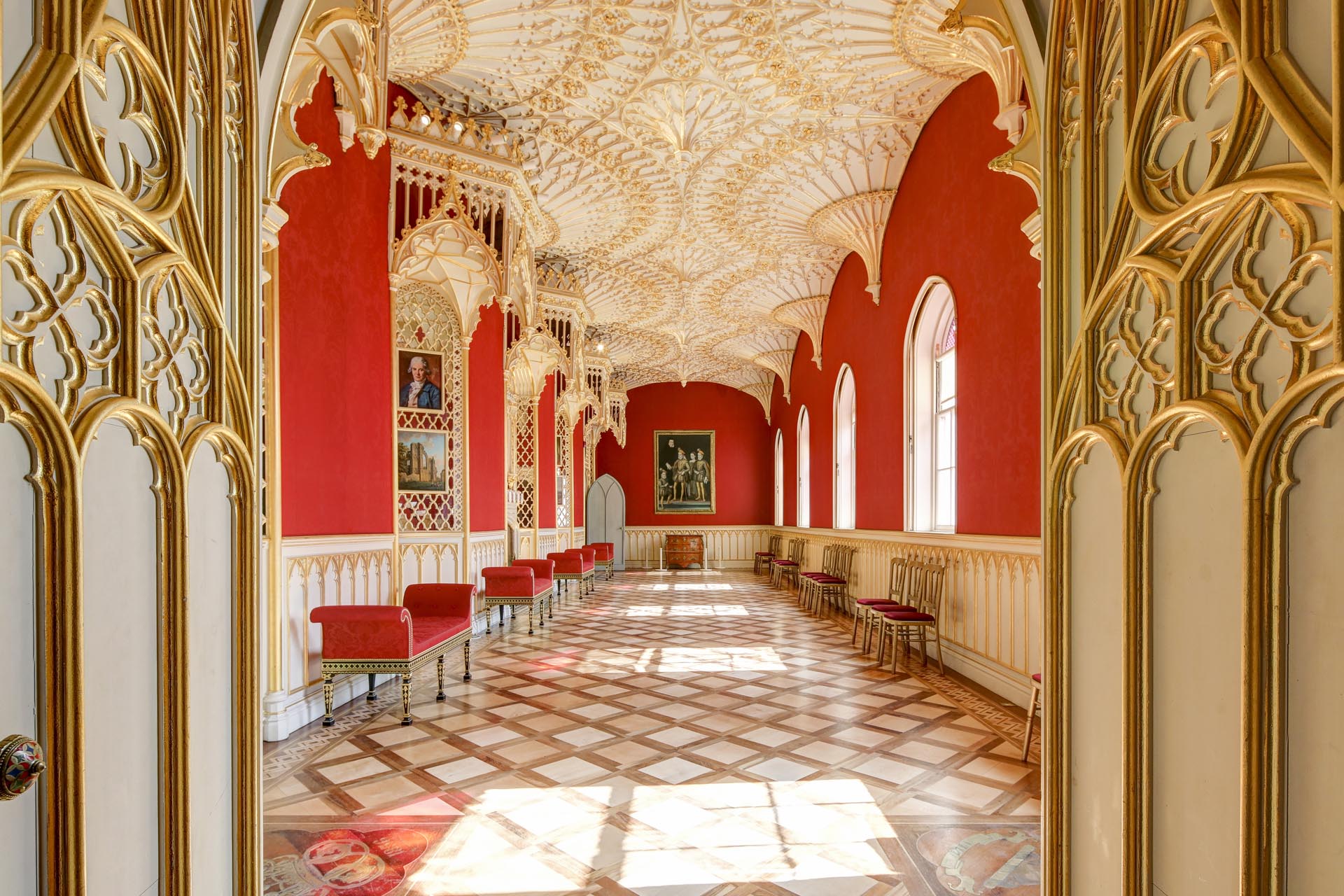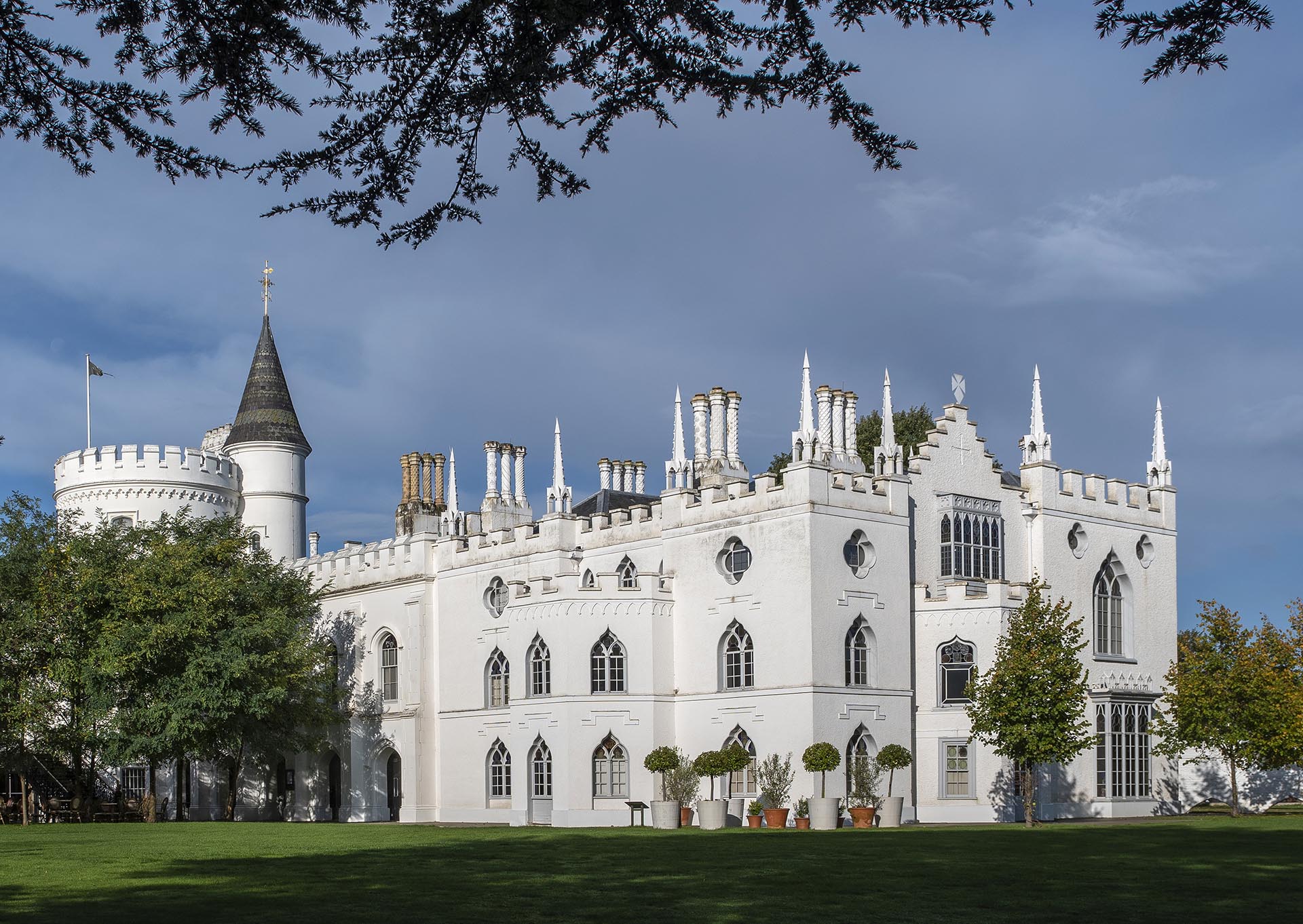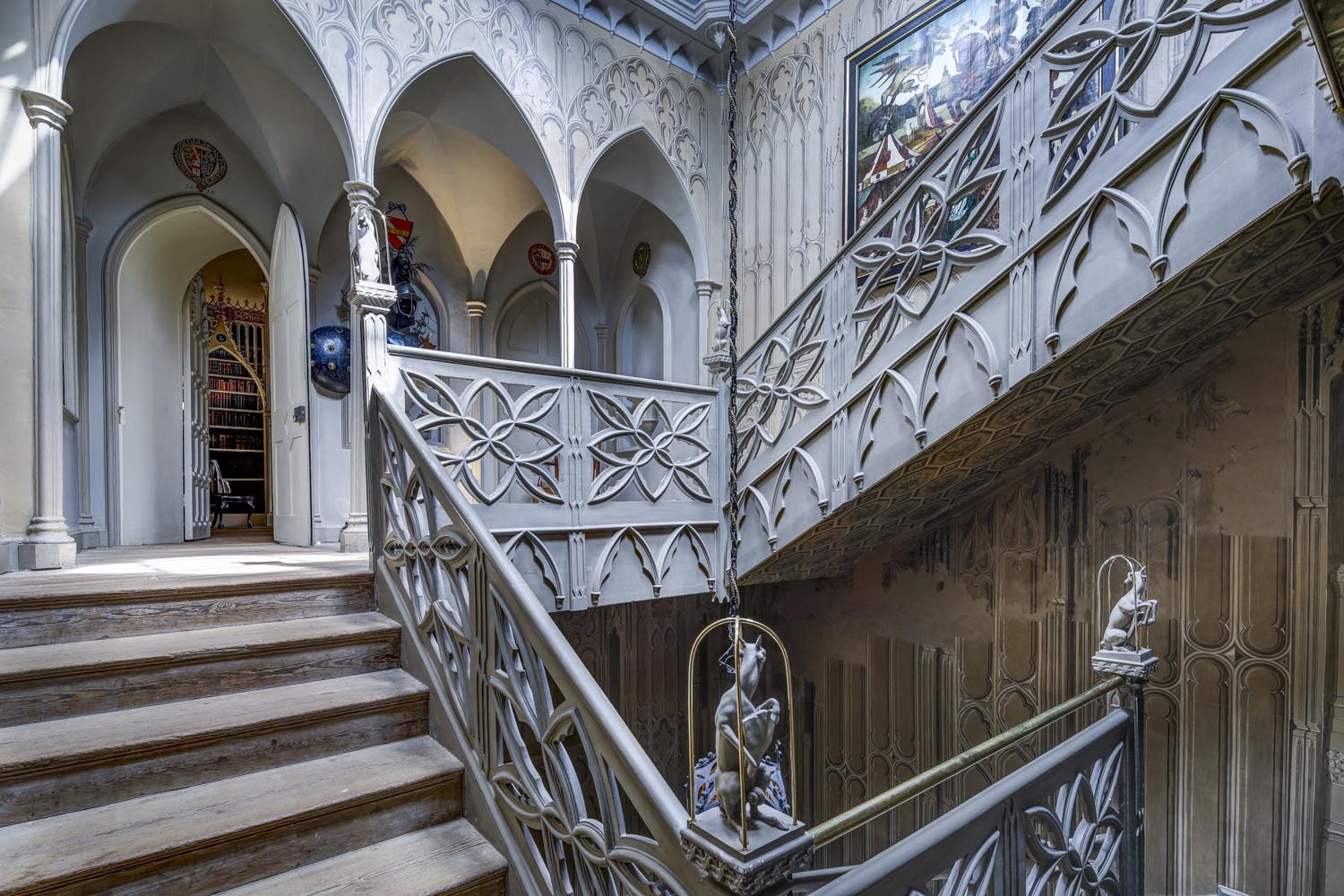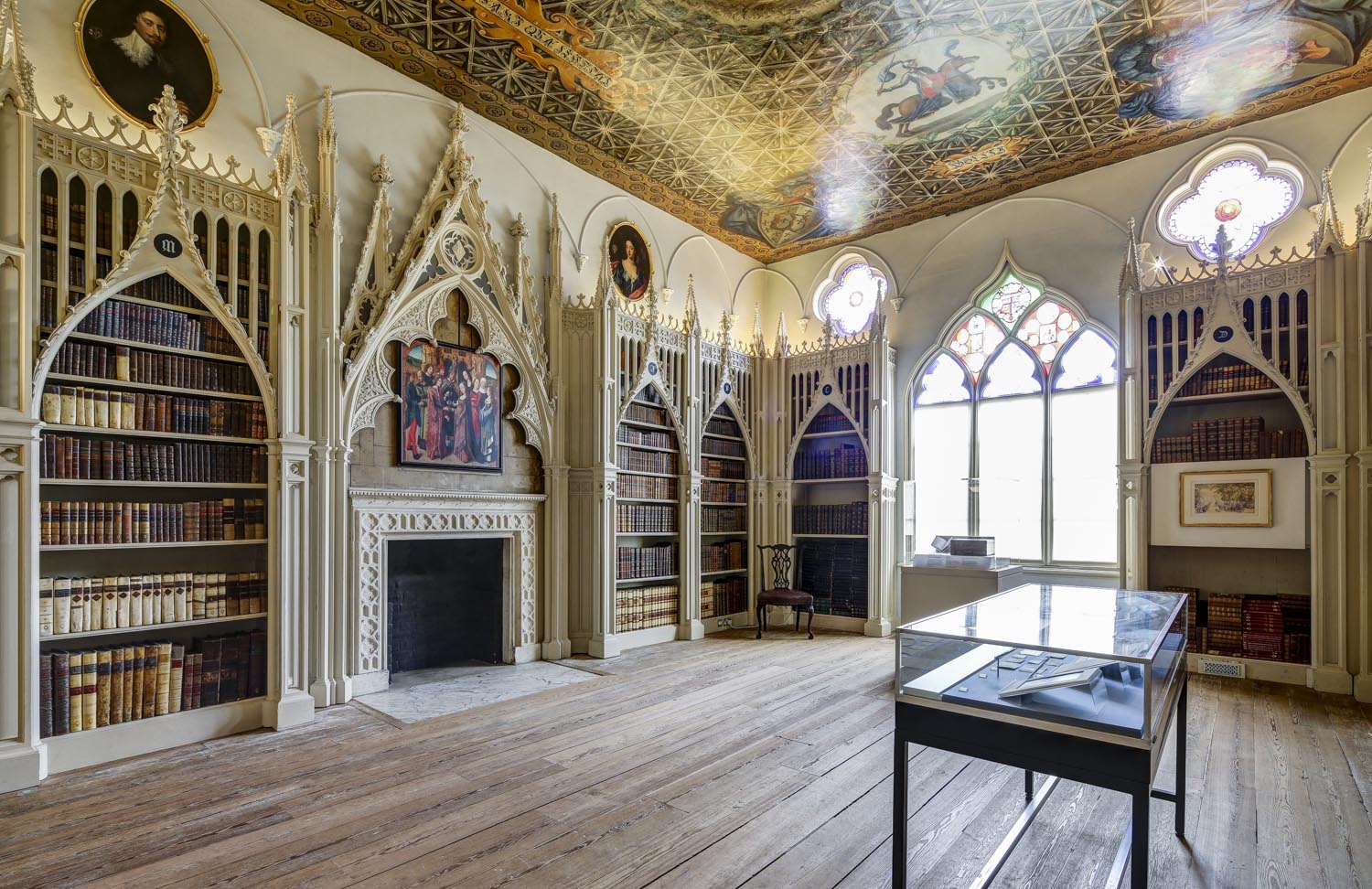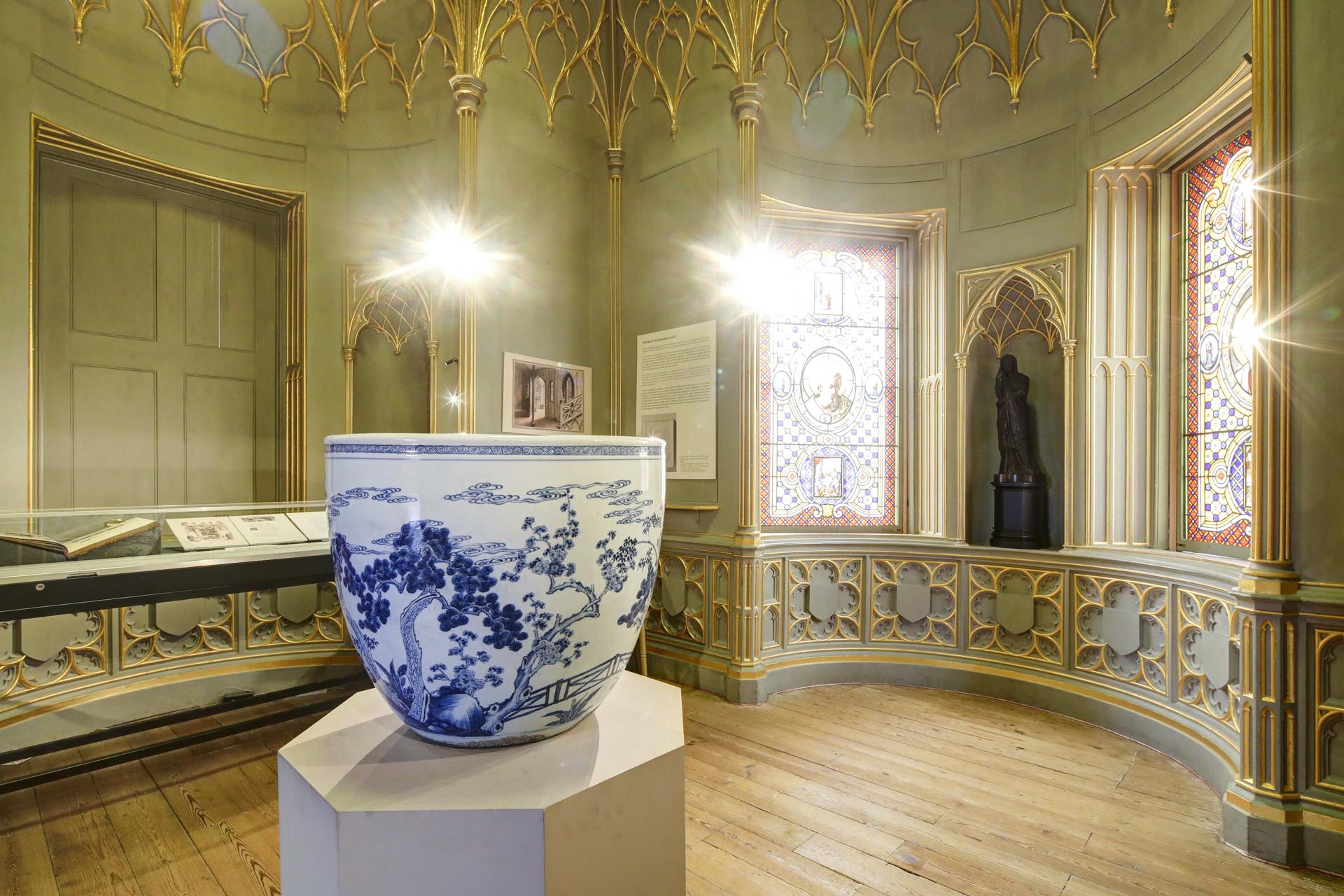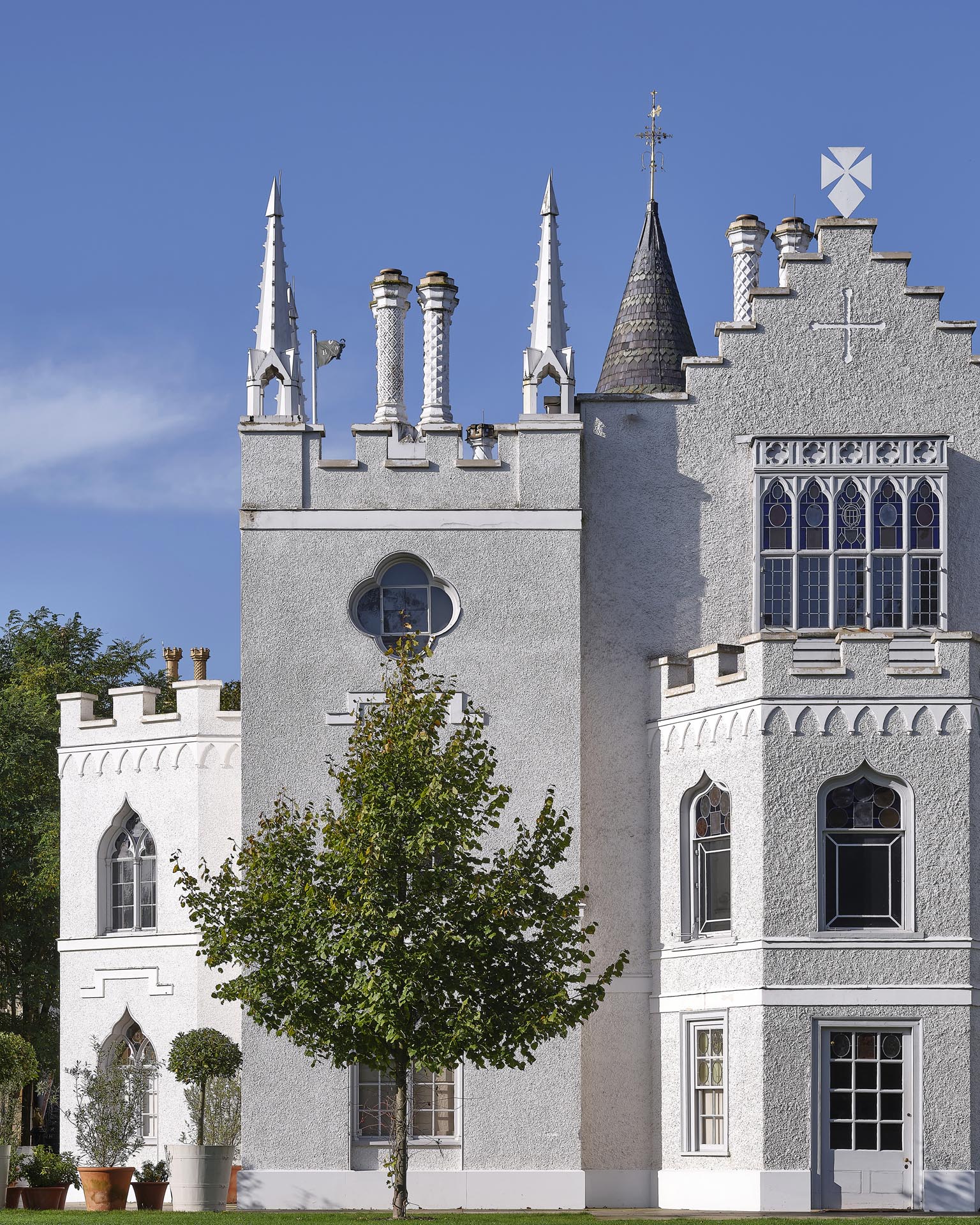Visionary of an unusual man
Strawberry Hill House has been open to visitors for over 250 years, but even today while approaching a fantastical white gothic villa with its turrets, battlements, crenelations and jauntily-shaped windows you might think you are dreaming.
The visionary behind the mansion was Horace Walpole (1717-97), the youngest son of Sir Robert Walpole, one of the most influential figures in politics serving for twenty years as the first British Prime Minister. Following his father’s footsteps, Horace became MP for Callington in 1743, but never actually set foot there and demonstrated more interest in arts and architecture, gothic cathedrals around Europe in particular.
Four years later taking over the lease of the house in Twickenham near the river Thames, a rural retreat for London’s wealthy, fashionable and artistic type in the 18th century, Horace Walpole recast it as his family’s “ancestral castle”.
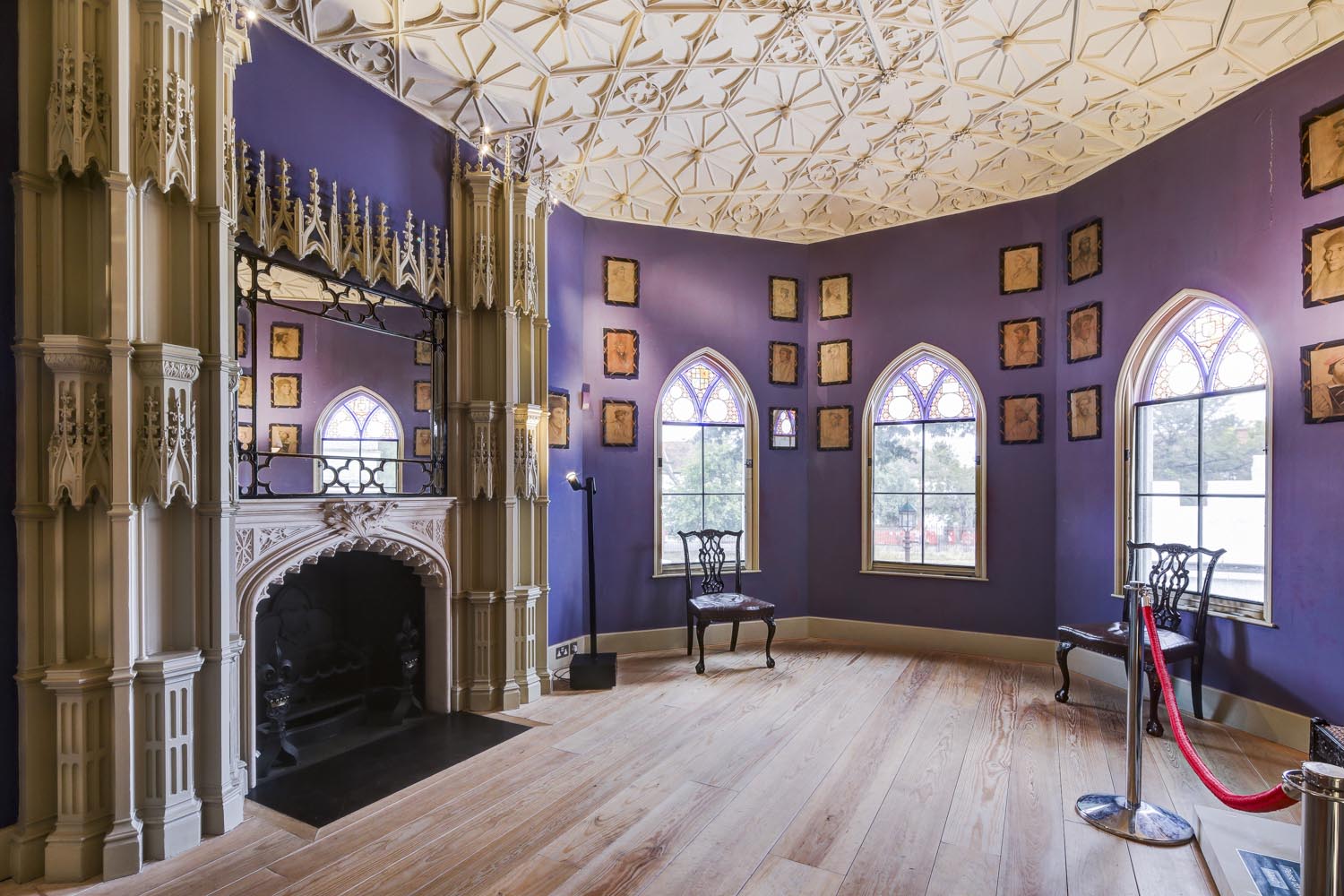
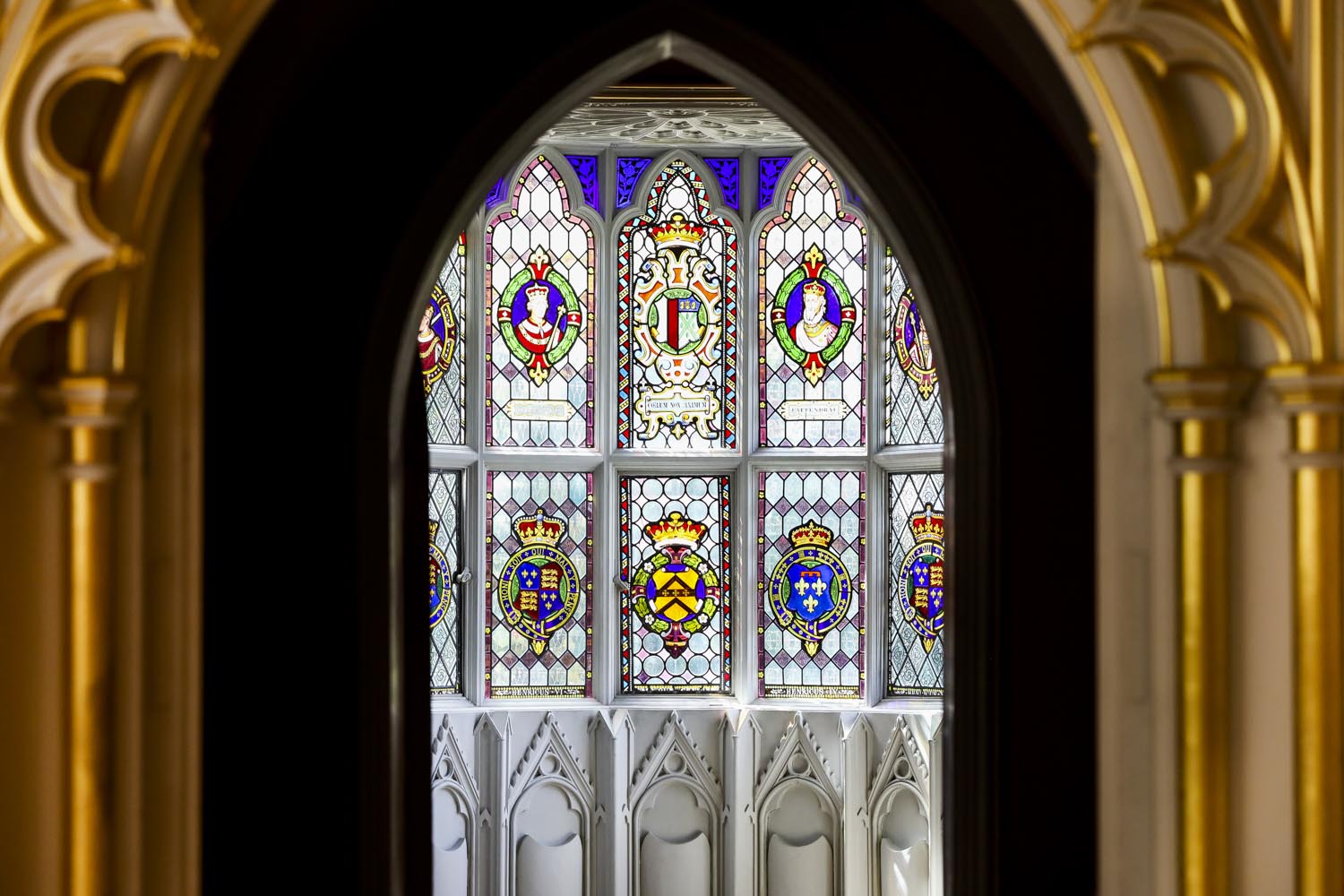
A glorious Gothic fantasy
Aided by friend Robert Adam, Walpole used details from Gothic monuments and buildings. For example, the fire place at the Round Room, one of the most expensive interior features at Strawberry Hill, is inspired by the tomb of Edward the Confessor in Westminster Abbey. Horace also animated the house with his own vast collection of books, antiquities and curios, furniture and paintings, including works by Hans Holbein, Anthony van Dyck and Joshua Reynolds.
Eventually he became the driving force behind interest in gothic art and architecture at a time when classicism dominated well-to-do tastes. Strawberry Hill was the first building to be Gothic inside and outside, and to be a real house, and the pioneer project for the Gothic Revival that led to structures such as the Houses of Parliament.
After spending many years decorating the house, Walpole wanted his objects to be ¬admired. He gave personal tours to distinguished visitors, but left his housekeeper to escort the guests to avoid petty theft of his expensive possessions.
The library
The most Gothic of the interiors is the library. It was sparsely furnished in an effort to emphasis the architecture; pointed arches are found throughout, on the bookcases, the doorways and the windows. The ceiling is decorated with heraldic emblems, mythical beasts, coats of arms and crusaders, all of which are reflective of Horace’s interests of the medieval period.
The building has friendly and knowledgeable tour guides in almost every room. One of them kindly pointed out the Walpole family motto Say what you feel that’s written in Latin on the ceiling.
He truly loved his library and created a unique system of listing the literature. In addition to existing books, Walpole was the owner of the first private print press in the UK and could publish anything he wanted.
Goldfish bowl with a sad story
Another helpful guide gave us the backstory behind one of the most iconic and macabre objects owned by Horace Walpole – Goldfish Bowl. The beautiful, large blue and white vase achieved a certain notoriety after Walpole’s favourite cat Selima, who drowned in it while trying to catch goldfish.
The incident was later immortalised in a mock-heroic ode by Walpole’s friend, the poet Thomas Gray – Ode on the Death of a Favourite Cat, Drowned in a Tub of Gold Fishes (1747). The cat’s death actually occurred at Walpole’s London house, in Arlington Street, and the bowl, along with many other works of art, was moved to Strawberry Hill sometime in the 1760s.
An escape from time
By the turn of the 21st century, the property had fallen into disrepair. The extensive £9million restoration was completed in 2010 to bring Walpole’s cultural legacy and imaginative self–expression back to life and open to everyone to enjoy.
Strawberry Hill House is open to visitors Sunday – Wednesday, 11am – 4pm, more information can be found here.
Image credits: © Kilian O’Sullivan and Matt Chung


